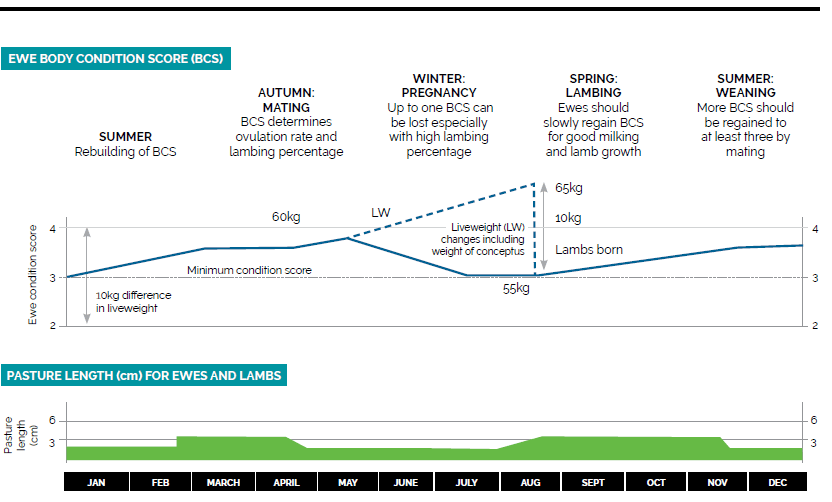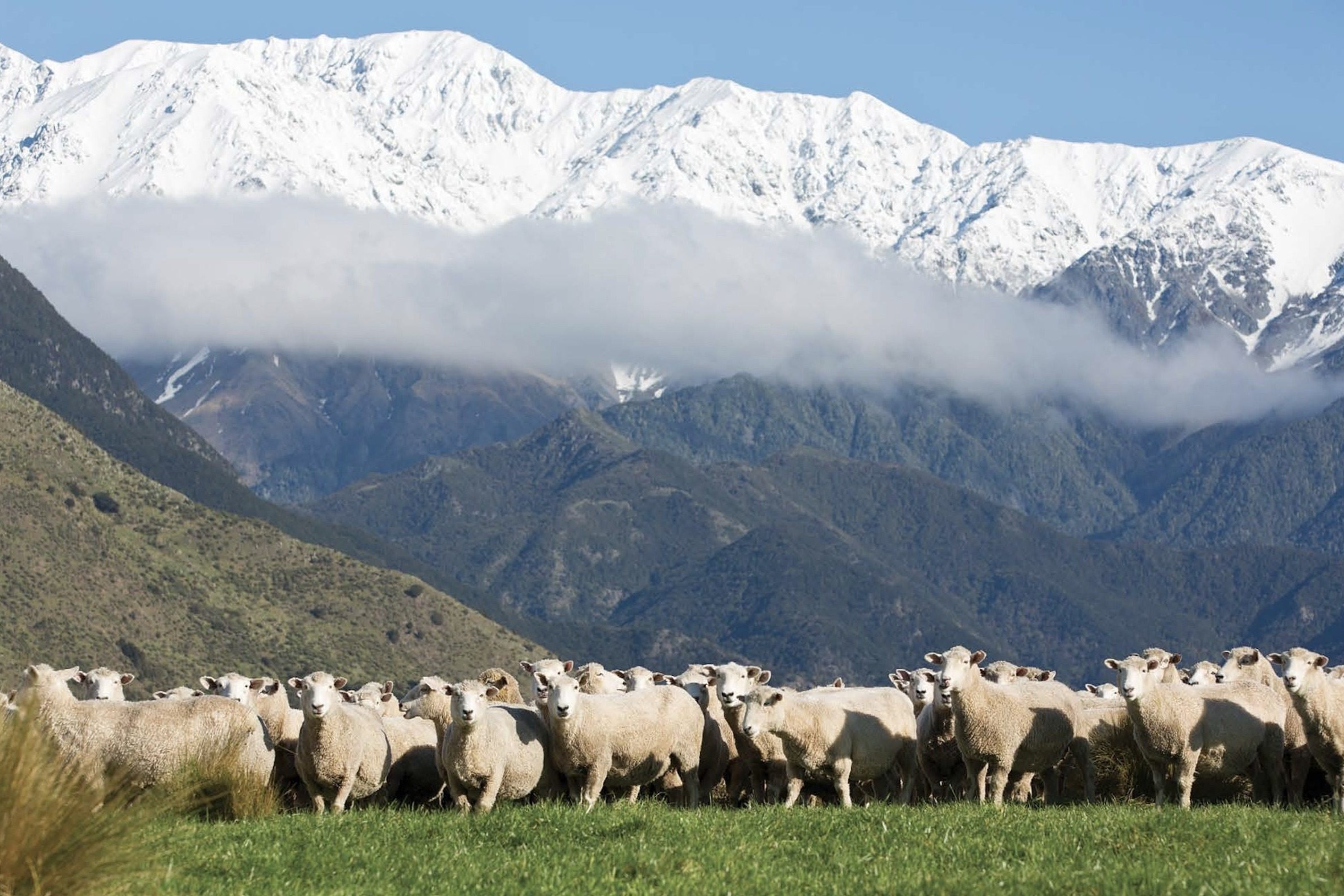As this year draws to a close it’s time to think about preparing your breeding stock for a good performance next year. Summer-autumn is often when production is pretty much ‘set’ for the coming year.
Of crucial importance is maintenance or increasing of ewe body condition score, even though pressure often relaxes after weaning. This may mean a compromise between working ewes on cleaning up rougher paddocks but not letting them slip backwards at the same time.
In particular breeding ewes will probably have lost body condition during late pregnancy and lactation which needs to be recovered before next mating. It’s extremely difficult to avoid this loss in ewe body condition over pregnancy-lambing, particularly with higher lambing percentages.
The desired recovery in ewe body condition score (BCS) over summer in relation to the rest of the year is shown in the diagram.
The scenario portrayed is for a 55-60kg ewe maintained at BCS 2.5 or above, and having lost one condition score from mating to lamb drop. Similar principles will apply to lighter or heavier ewes. Also shown are ewe liveweight changes, allowing for the additional weight of developing lambs. Changes in maternal body weight, ignoring weight of conceptus, being 5-7kg for each condition score.
The important rebuilding of ewe BCS over January-February prior to mating will require quality pastures about 3cm in average length meaning over 1200kg drymatter (DM)/ha, or the equivalent amount of tucker in rougher pastures or supplements. Your ewes will need about 15 megajoules of metabolisable energy, or 1.5g of pasture drymatter a day for liveweight gain.
The importance of gradual ewe BCS recovery over summer is pretty much an insurance against relying on more rapid liveweight gain during March-April leading up to ram joining. This may not be possible if the season doesn’t come up to expectations. Ideally ewe BCS at joining should be about 3, often meaning a required increase of up to one condition score or 5kg liveweight since weaning. Suddenly requiring 3-4cm pastures or 1500 kg DM/ha can be a big task unless autumn is being kind.
If feed supply allows it’s much more efficient and productive to hold ewe liveweight and BCS year round close to BCS 3 than to lose and regain. Over summer ewes will require 1-1.3kg of quality pasture DM a day, or the equivalent, to hold body condition score near 3.
The main determinant of the coming season’s lambing percentage is ovulation rate at mating. As well as ensuring BCS is 3 or above, an increasing level of nutrition immediately around the mating period, known as the dynamic effect, will help ensure maximum release of eggs to be fertilised. A benefit of 5-10% in lamb drop can come from the additional eggs shed. To nail this a change to fresh paddocks or ensuring existing pasture on offer is at least 1500kg DM/ha as rams go out will do the trick.
The ewe liveweight and BCS profile for your farm may be quite different to the one illustrated in the diagram. The key points to remember are achievement of good BCS of 3 or above at mating, minimizing losses over pregnancy and lactation to less than one condition score, and re-building to 3 plus by the following mating.

That’s the girls taken care off now for the boys. Having your rams in good nick is of paramount importance as each will sire up to 100 lambs.
As for the ewes, try not to let your ram team slip below BCS 3, whether newly purchased or retained from previous years. This means keeping an eye on them including regular shifts for exercise and ensuring feed is up to scratch. Then eight weeks before mating it’s recommended you have a veterinary check, or if competent done yourself, for things such as:
- Wounds or fly-strike
- Genital health including epididymitis, scrotal mange or pizzle rot
- Foot problems which may compromise mobility
- Sperm development takes about eight weeks so all sperm used at mating has been made well beforehand. During this eight week period good feeding and exercise, as well as the above health checks, are essential.
A contagious disease to be wary of is brucellosis which may manifest as epididymitis. It reduces ram fertility and may cause abortion. Vaccination is generally not practiced so buying rams from accredited brucellosis-free flocks is the answer.
All the above become relatively more important in high-serving capacity situations where ram:ewe ratios are up about 1:100. Or where single-sire mating groups are used in ram breeding flocks. Serving capacity and libido tests can be designed or carried out by reproductive experts in the above cases.
It is recommended to use lower ratios closer to 50 ewes per ram with younger ewes and/or rams.
Use of synchronisation or hastening onset of breeding activity can be done close to the start of mating using vasectomised rams which are put out with the ewes. This is often used to stimulate hogget cycling. Identification of ewes in oestrus for artificial insemination can also be done with harnessed vasectomised rams carrying marking crayons. Vasectomies should be done by a vet at least six weeks before use.
- Ken Geenty is a primary industries consultant.





